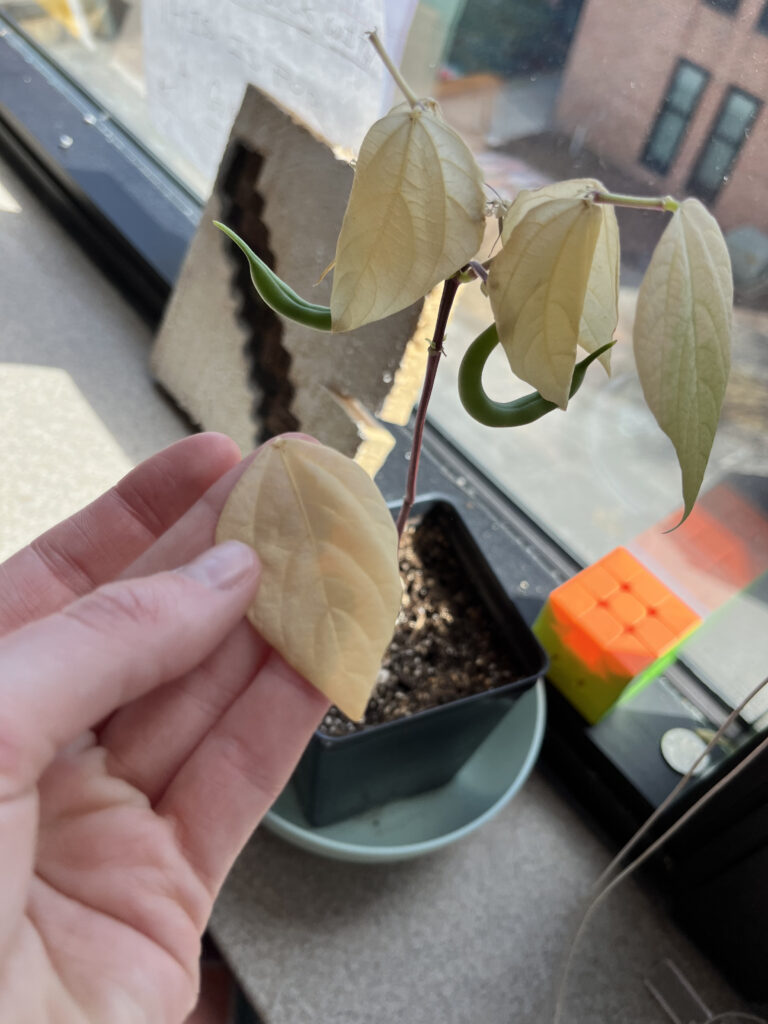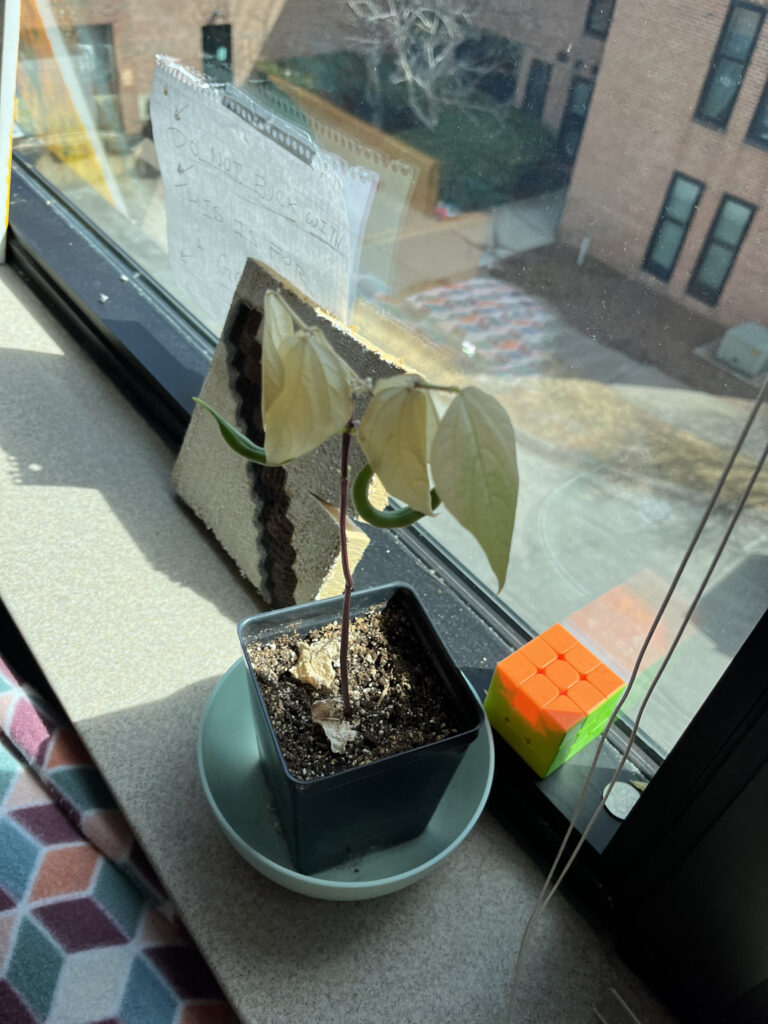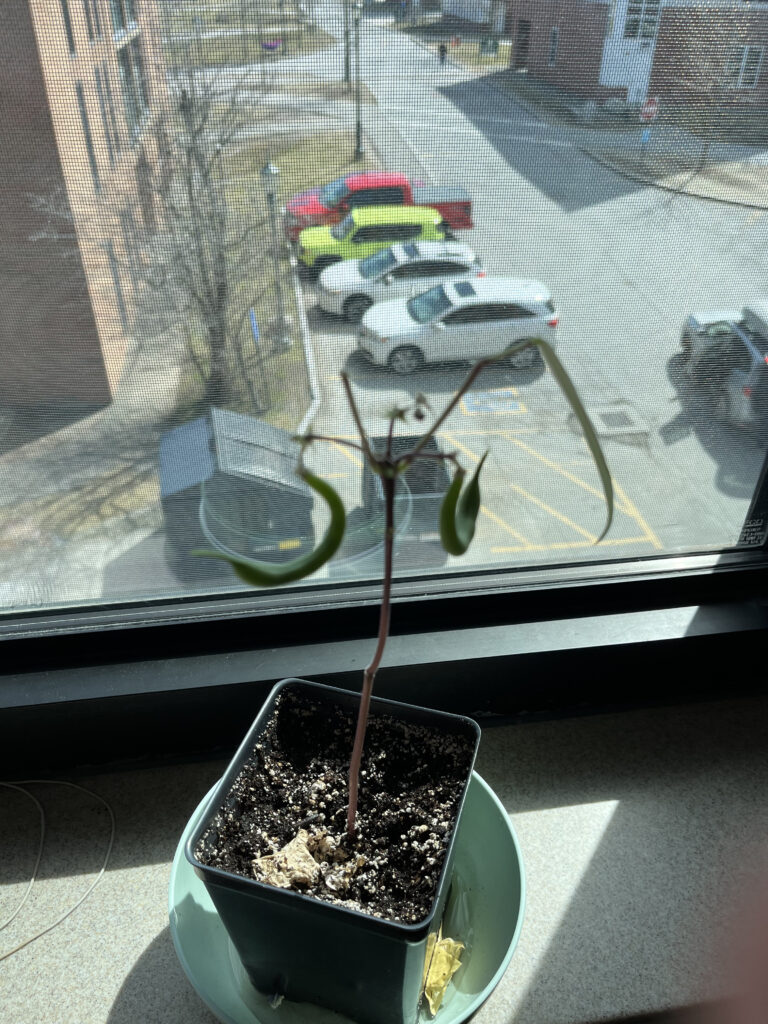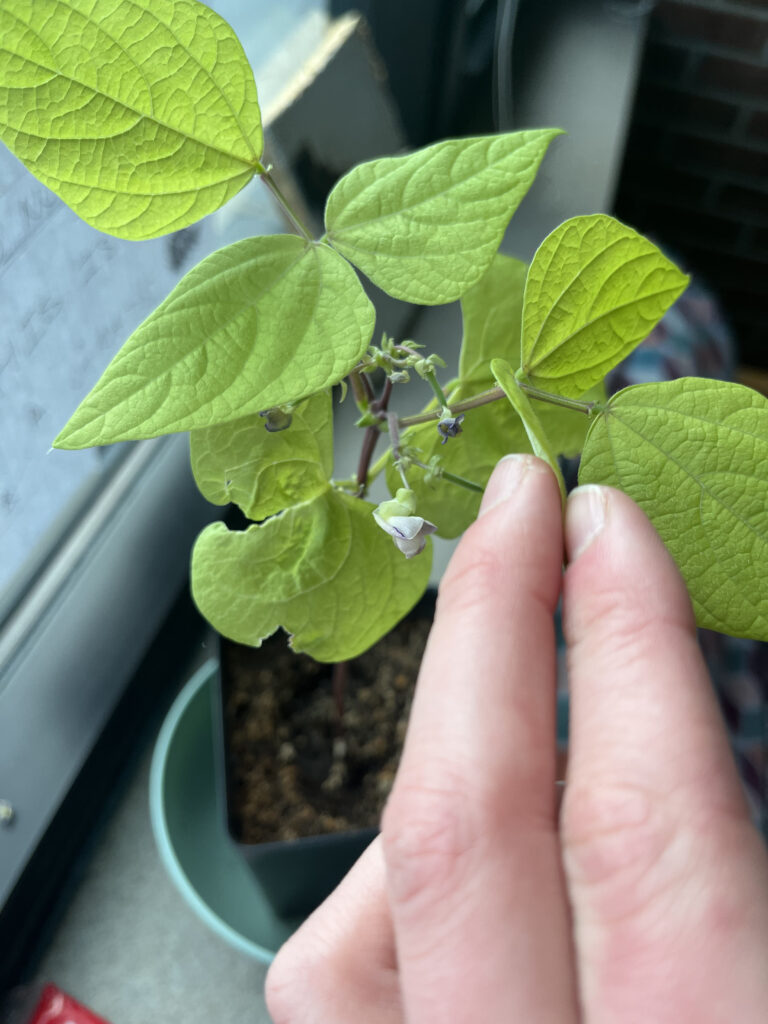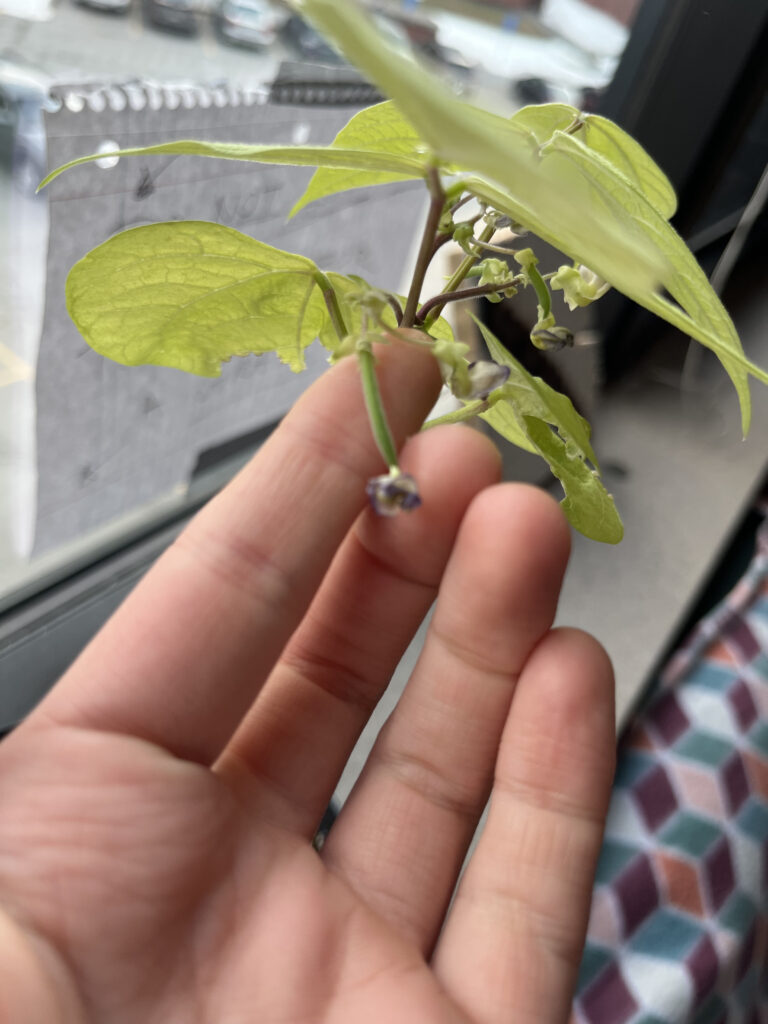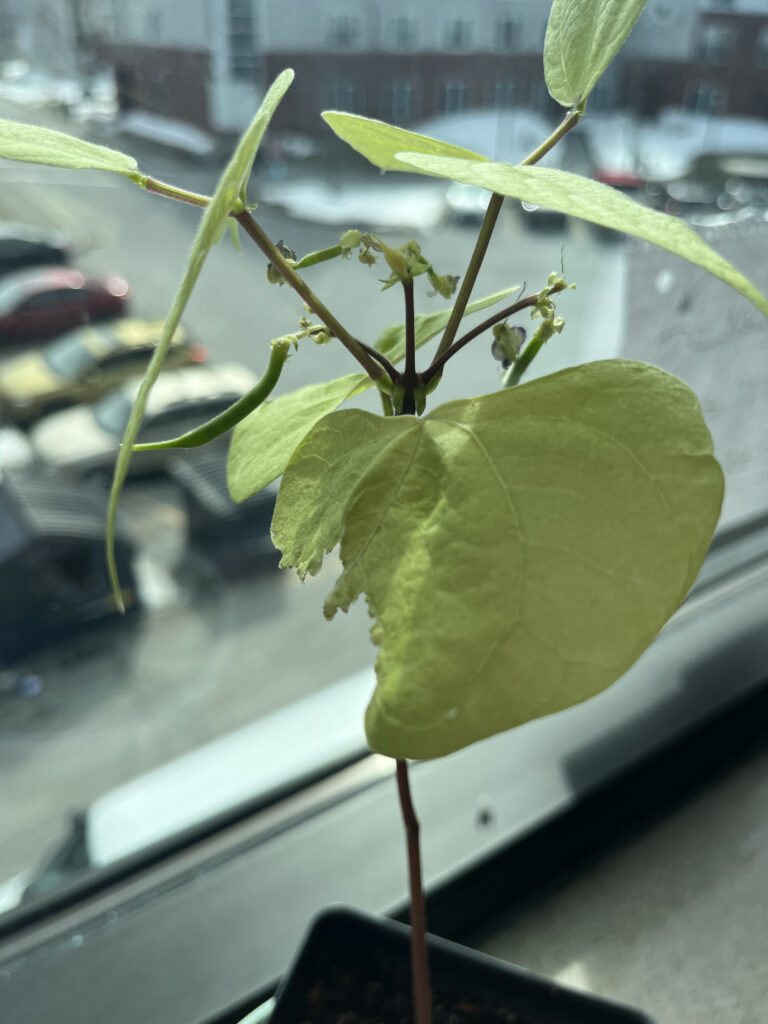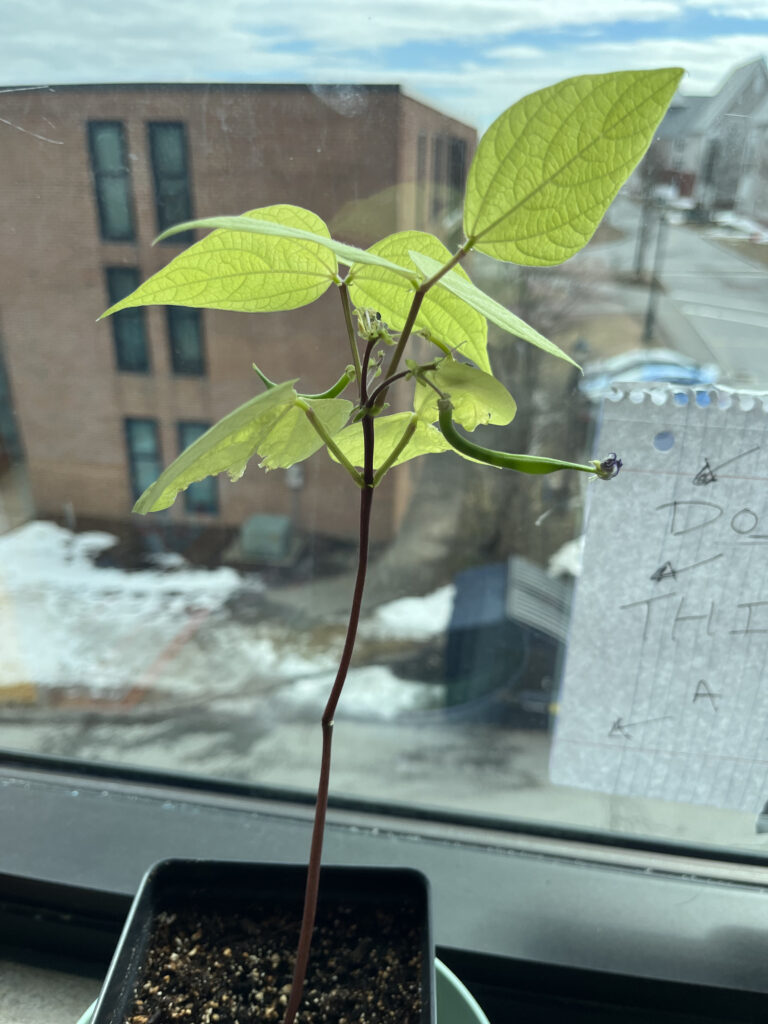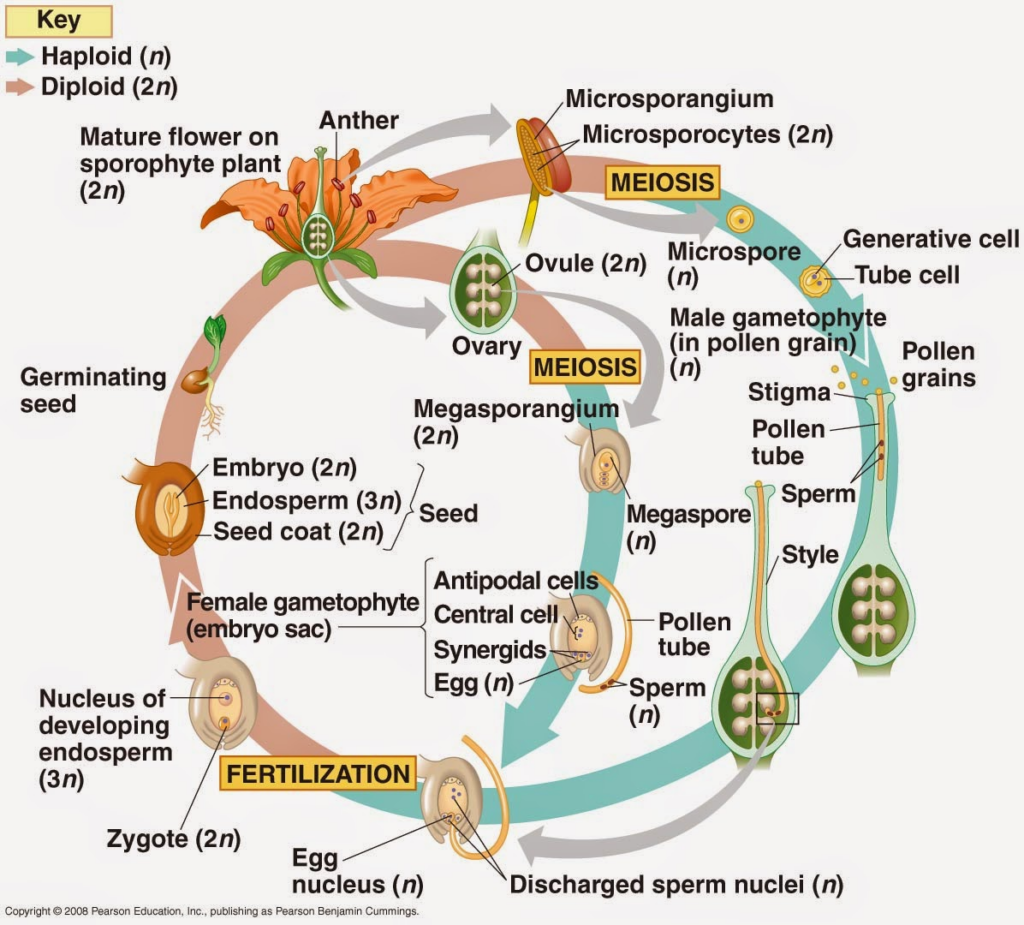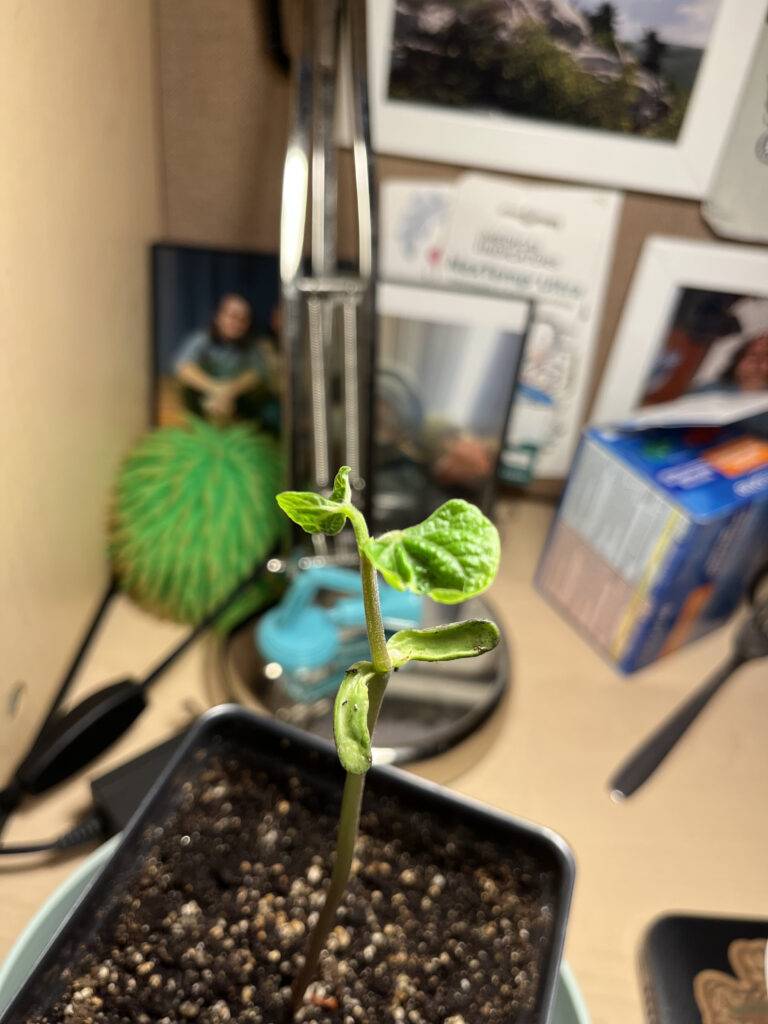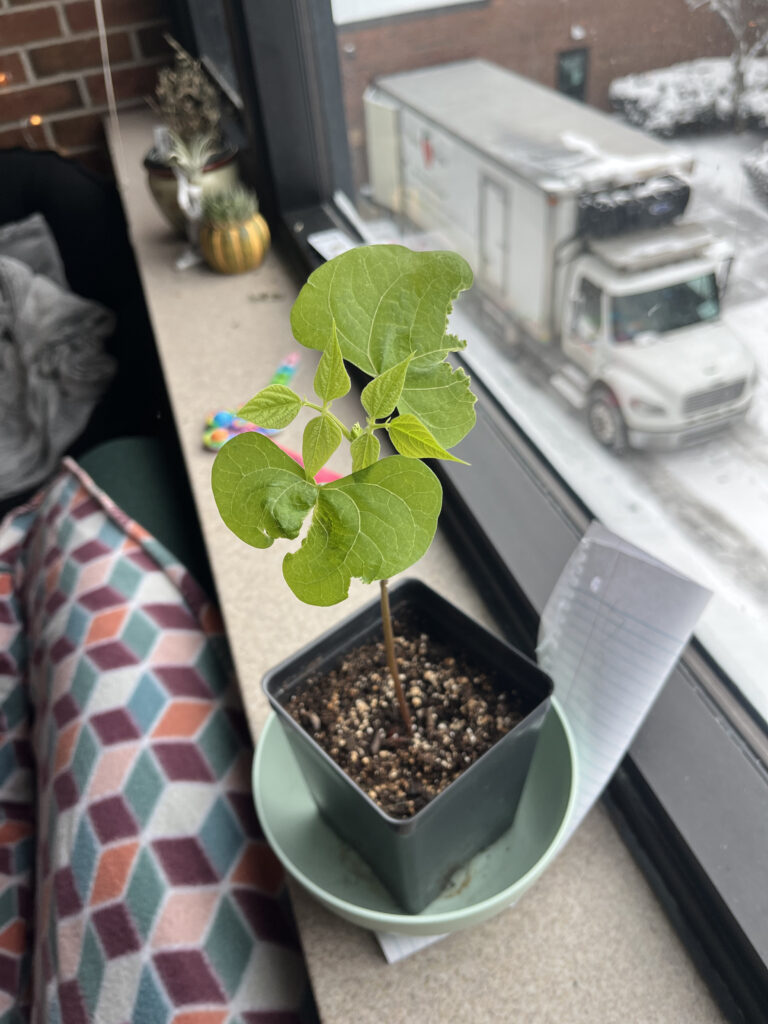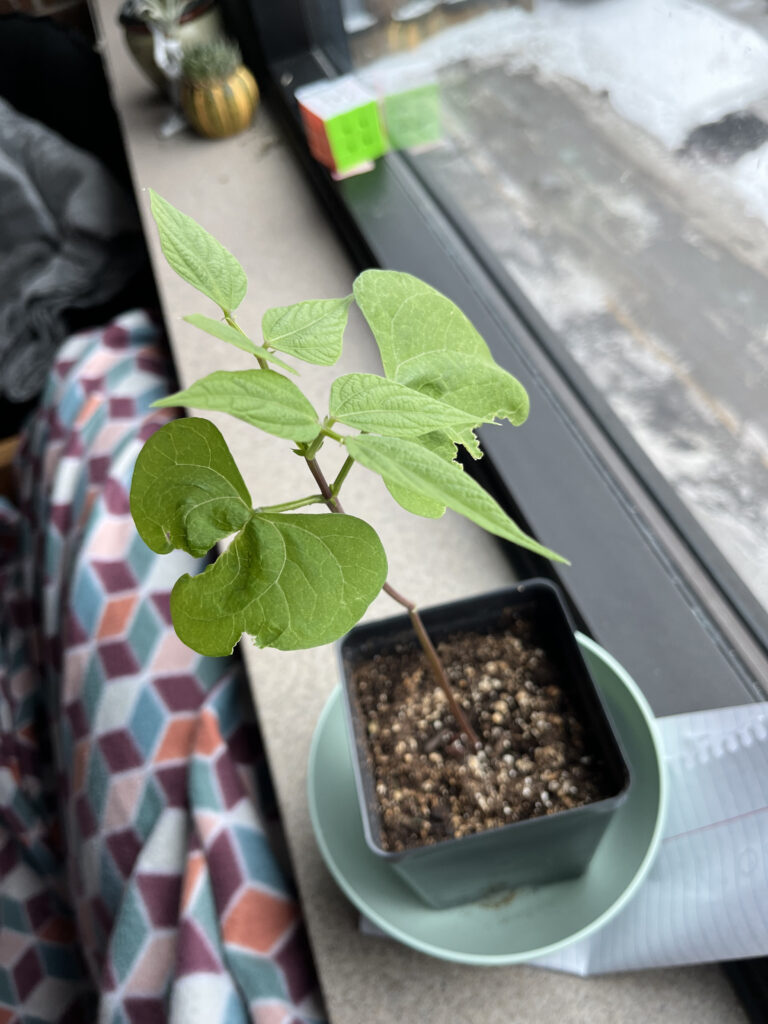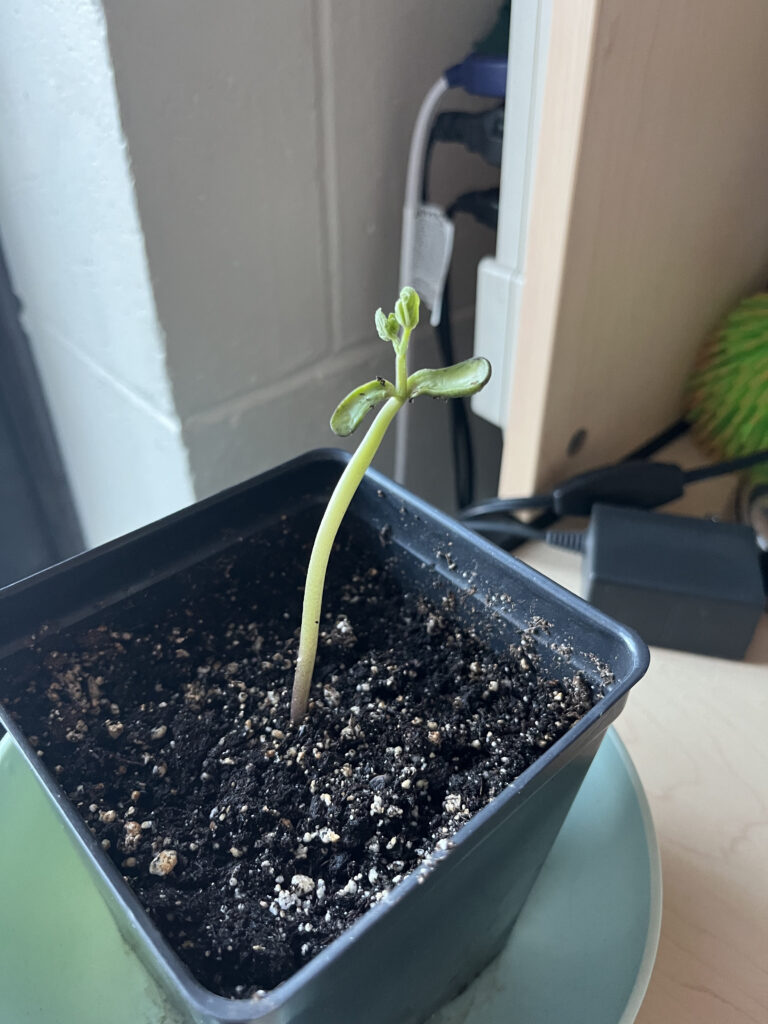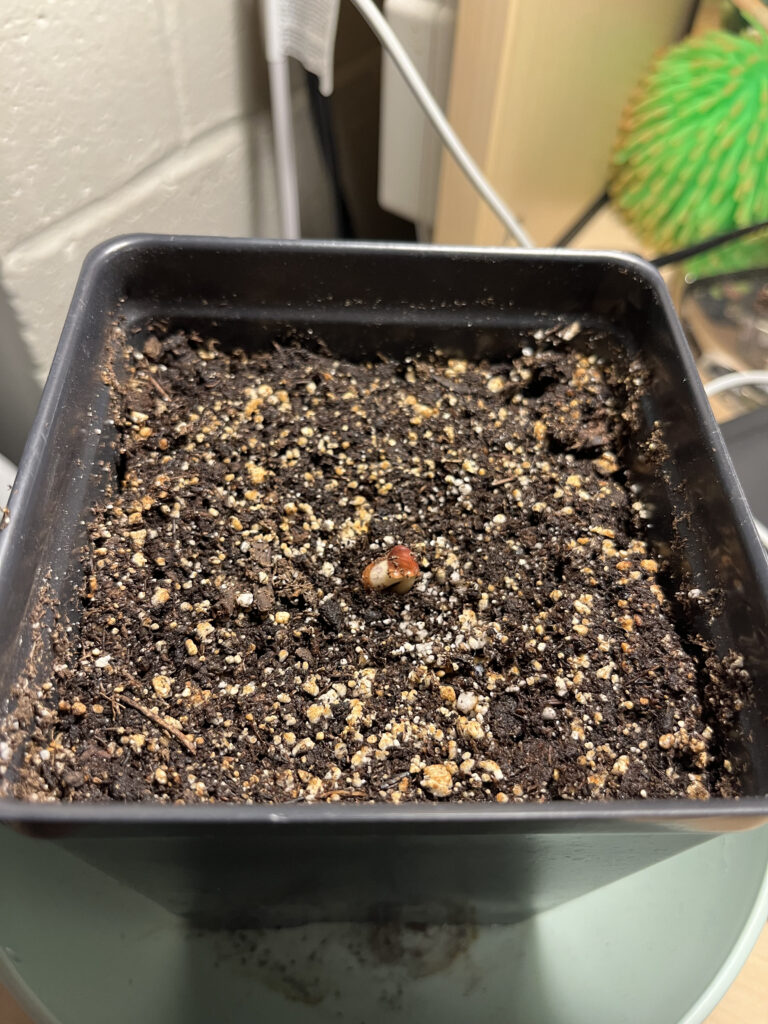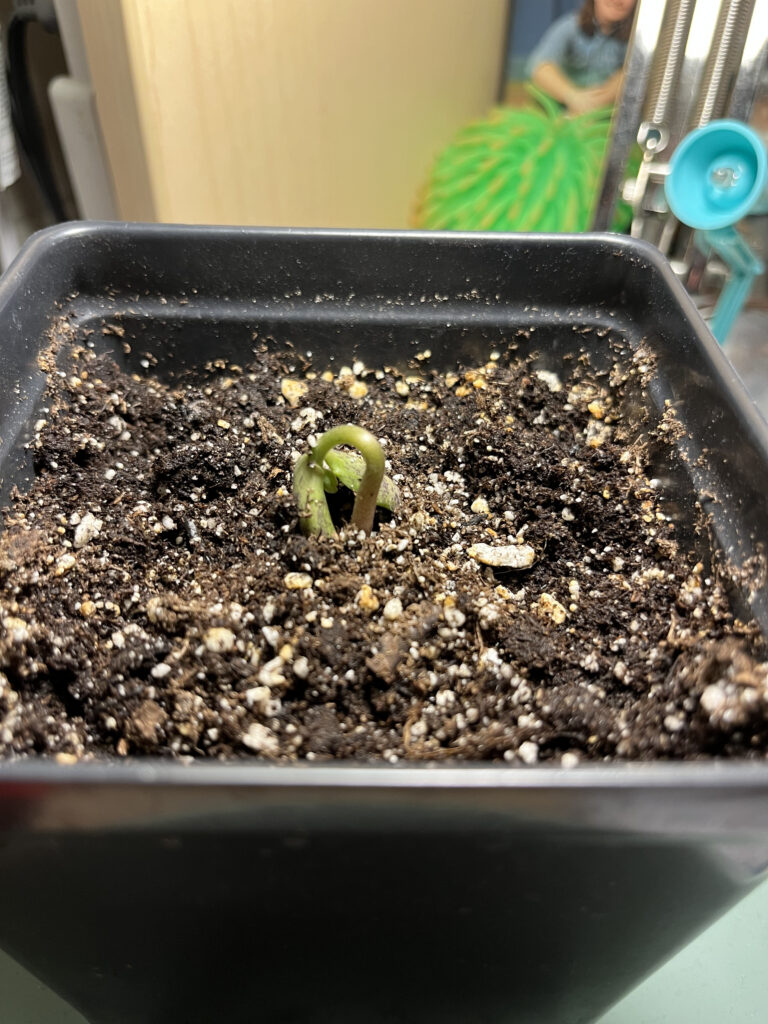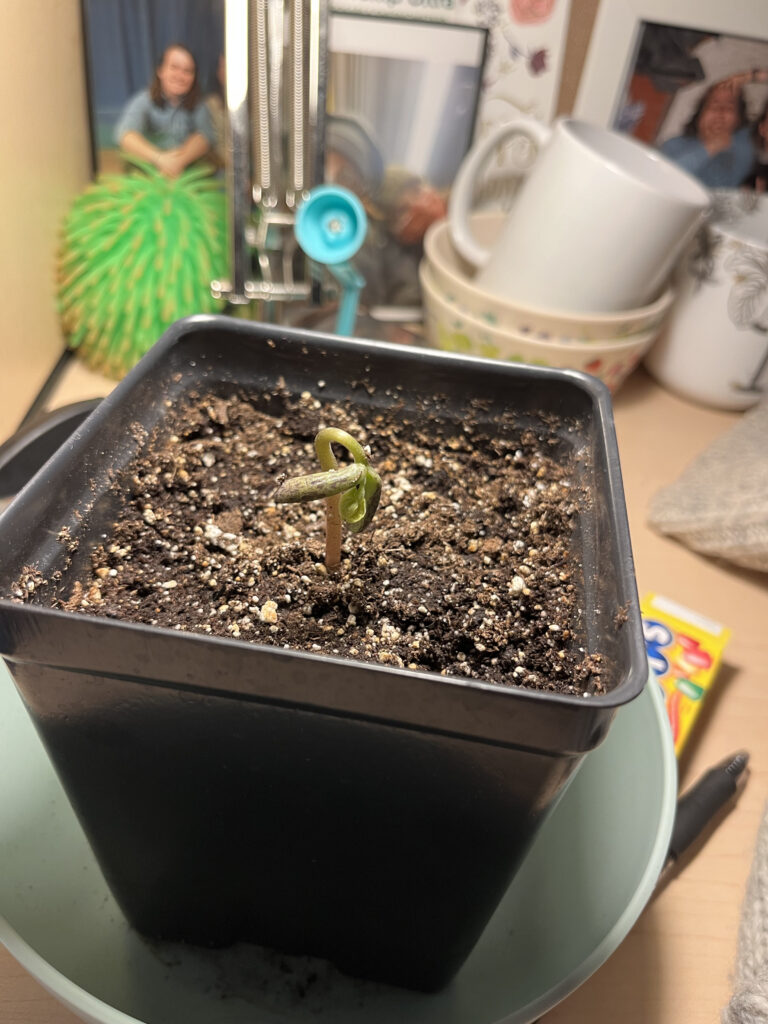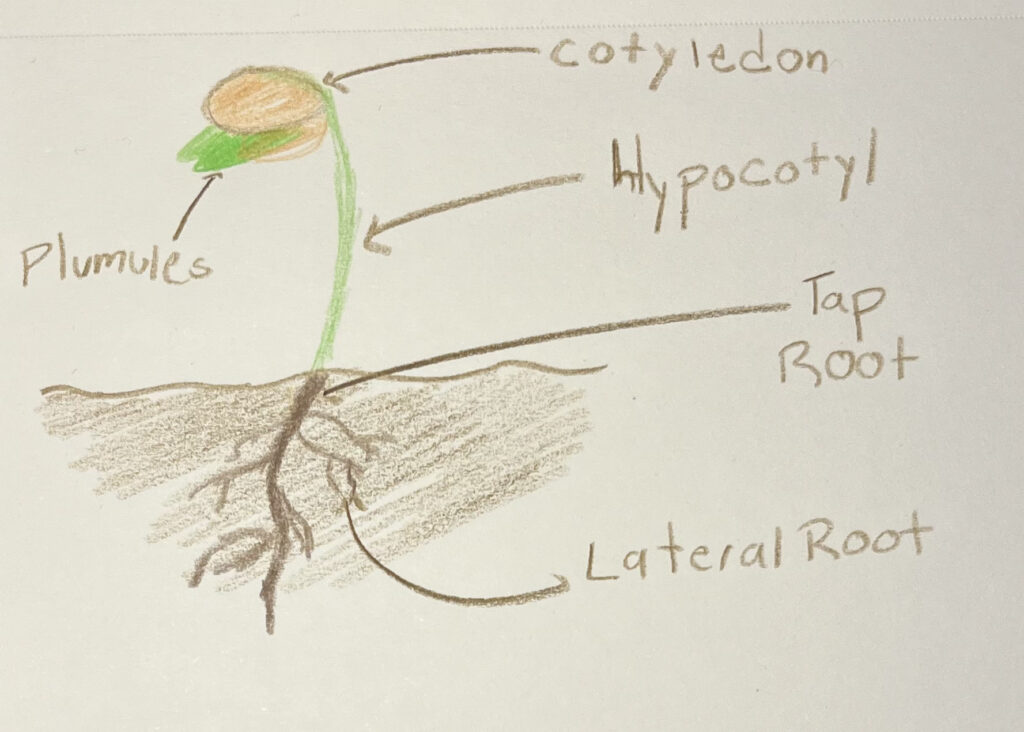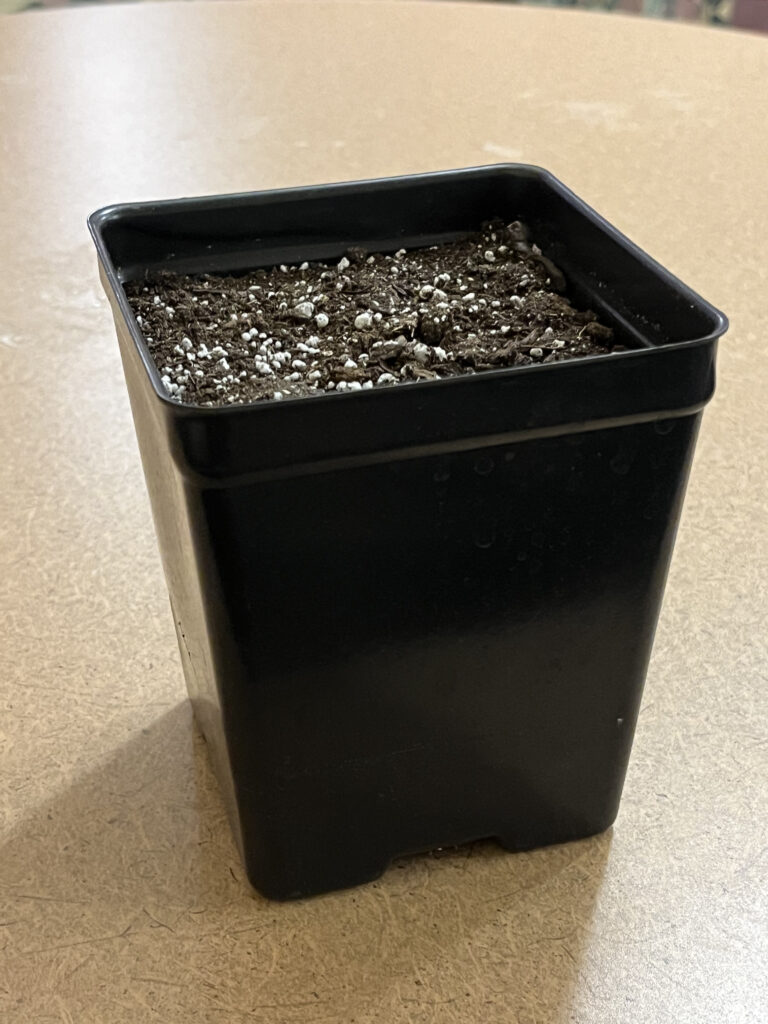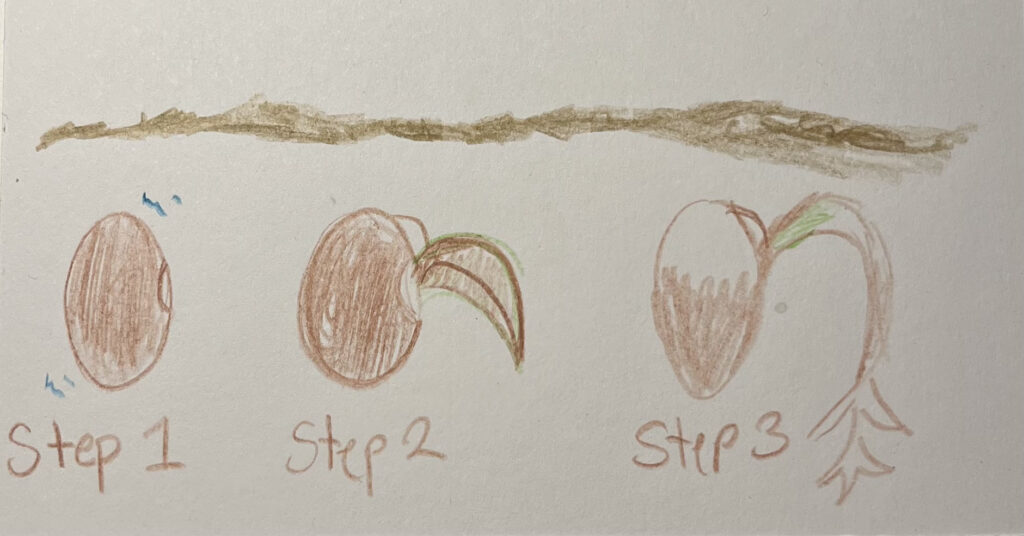
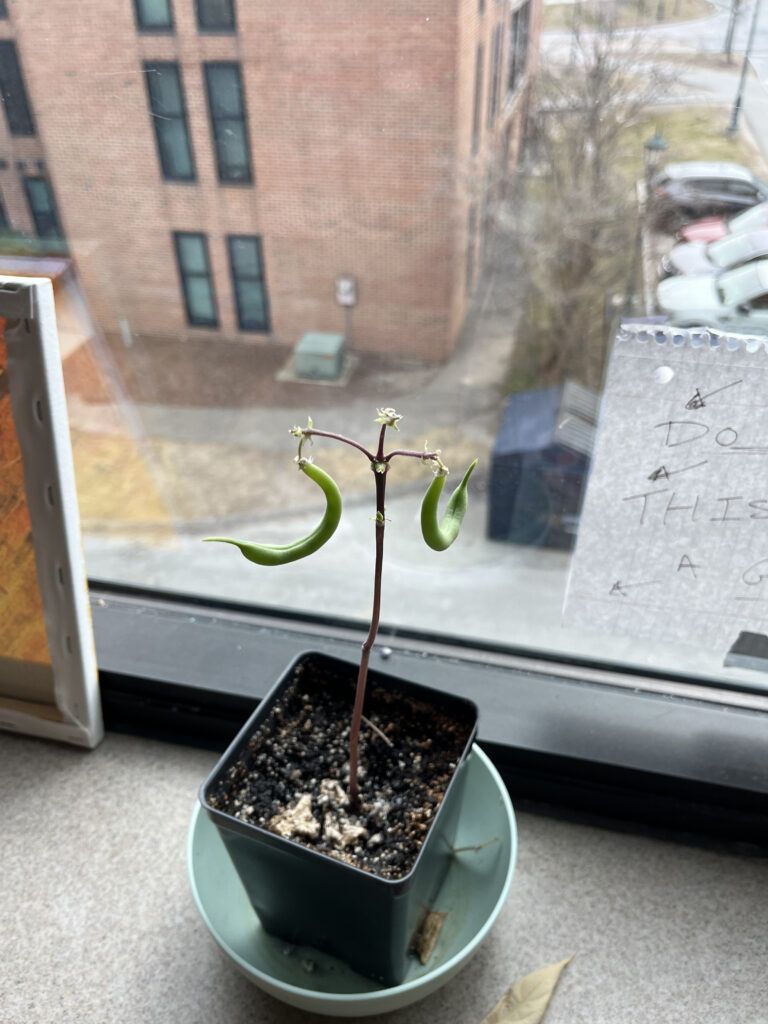
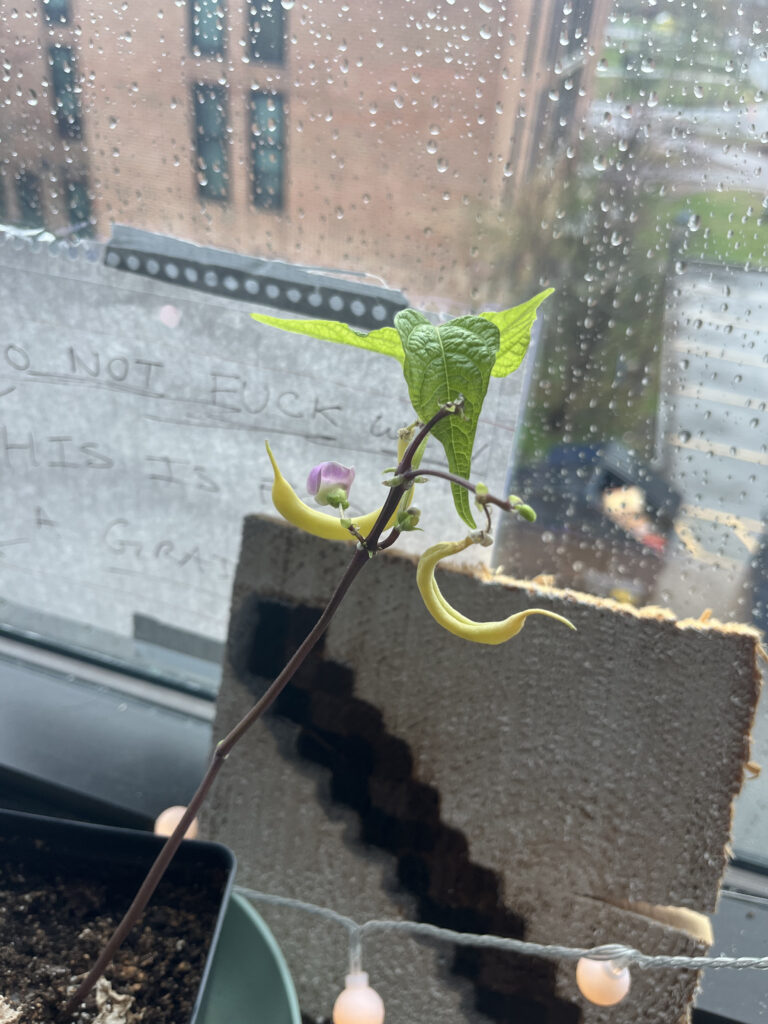
After like three straight weeks of just a stick with beans on it, we are finally getting some growth!
This is a diagram of the bean flower i pulled off the internet.
A: Ovule: where the egg is stored and where the embryo grows
B: Sepals: leaves that protect the flower
C: Petal: attract pollinators with their beautiful colors and shapes
D: Carpel: female part of the flower. This includes the ovule, style , and stigma. Where female gametes are produced
E: Pistil: the male part of the flower. Includes the anther and filament.

In my bean plant, the flowers are a blue/purple and look like they should be insect pollinated: but they aren’t! They are actually self pollinating. When the flowers open, the anthers (where the pollen is) brush against the stigma (where the pollen needs to go to get to the egg). Cross-pollination is very rare!
The entire plant is leaning right now, I think it’s because it’s following the sun, so I moved it to more direct light. That’s an example of phototropism. Another tropism is geotropism: shoots grow up towards the sky and roots grow down towards the ground, regardless of orientation in response to the force of gravity.
This is the last update on my bean. Very much a wild rollercoaster of events. Truly enjoyed the experience. Now that this project is over, I will be sinking my pearly whites into the fruits on my bean plant, and enjoying a delicious snack. CHOMP.
